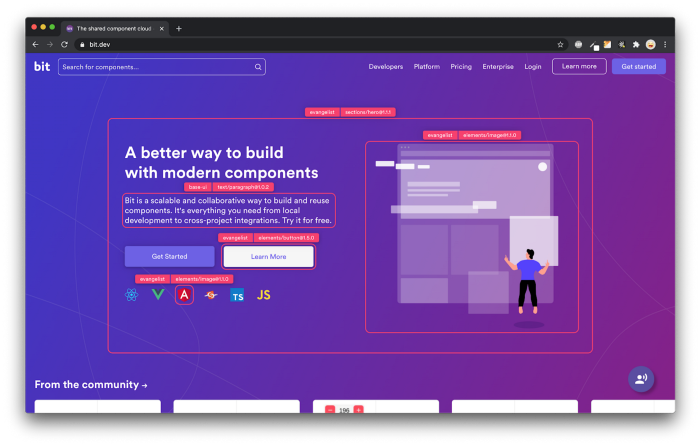This content originally appeared on Bits and Pieces - Medium and was authored by Emil Holmegaard
Consider scalability, resilience, domain understanding, API management, and technical debt when choosing a software architecture.
As a management consultant with a PhD in software engineering, I have seen numerous organizations struggle with software architecture decisions that have long-lasting consequences. In a technology-driven advisory, choosing the right architecture for your software system is crucial in ensuring its success. The architecture defines the foundation for how the system will function, evolve and scale over time.
Two of the most common architectural styles are monolith and microservices. A monolithic architecture is when the entire system is built as a single deployable application. A microservices architecture, on the other hand, is when the system is broken down into a collection of small services that communicate through APIs. Each service is responsible for a specific business capability and can be developed, deployed, and managed independently.


However, the microservices architecture has become increasingly popular in recent years, with many organizations embracing it as a way to improve scalability and resilience. While the microservices architecture offers many benefits, it also introduces new challenges and risks, such as increased complexity and the need for more sophisticated API management. Often the architecture for new project are started as a microservice architecture, even though that a simple monolithic application could have solved the business need.
CQRS (Command Query Responsibility Segregation) is a pattern that is often used in microservice architectures to separate the responsibilities of reading and writing data. This separation of concerns allows for greater scalability, as the read and write portions of the system can evolve independently.
Domain-Driven Design (DDD) is a methodology that emphasizes the importance of understanding the business domain and modeling the software system to reflect the underlying business concepts. DDD can be used in both monolithic and microservice architectures and helps to ensure that the system architecture aligns with the business requirements.
💡 Microservices can be complex — but making the right decisions on identifying and isolating each microservice is half the battle. Treating the microservices architecture like composable building blocks is key, and it’s made easier with a tool like Bit which allows your teams to independently publish, version, document, test, and share individual components such as functions, UI elements, or data models, that can be reused across multiple microservices. This can greatly reduce the duplication of code and increase the modularity and scalability of your system. Learn more here.
API management is also crucial in a microservices architecture. API management solutions allow organizations to manage the lifecycle of their APIs, including documentation, security, and analytics. Proper API management is essential to ensure that the microservices communicate effectively and efficiently, and to ensure that the APIs are secure and perform well.

Technical debt is another risk to consider when choosing the right software architecture. Technical debt refers to the cost of hidden costs related to maintaining and improving the system over time, including fixing bugs and adding new features. With respect to technical debt, the most expensive debt, is the one we introduce by choosing the wrong architecture or the wrong design patterns. In a monolithic architecture, technical debt can accumulate quickly, making it difficult to evolve the system. In a microservices architecture, technical debt can be managed more effectively, as each service can be updated and improved independently.
In conclusion, choosing the right software architecture is a critical decision that can have long-lasting consequences. Organizations must consider factors such as scalability, resilience, domain understanding, API management, and technical debt when making this decision. The risk of a wrong software architecture can be mitigated by embracing proven architectural patterns and methodologies, such as CQRS, DDD, and API management.
From monolithic to composable software with Bit

Bit’s open-source tool help 250,000+ devs to build apps with components.
Turn any UI, feature, or page into a reusable component — and share it across your applications. It’s easier to collaborate and build faster.
Split apps into components to make app development easier, and enjoy the best experience for the workflows you want:
→ Micro-Frontends
→ Design System
→ Code-Sharing and reuse
→ Monorepo
Learn more:
- How We Build Micro Frontends
- How we Build a Component Design System
- How to reuse React components across your projects
- 5 Ways to Build a React Monorepo
- How to Create a Composable React App with Bit
References:
- Sam Newman, “Building Microservices: Designing Fine-Grained Systems”, O’Reilly Media, 2015.
- Eric Evans, “Domain-Driven Design: Tackling Complexity in the Heart of Software”, Addison-Wesley, 2003.
- Greg Young, “CQRS, Task-Based UIs, Event Sourcing, oh my!”, Microsoft, 2014.
The Risk of a Wrong Software Architecture was originally published in Bits and Pieces on Medium, where people are continuing the conversation by highlighting and responding to this story.
This content originally appeared on Bits and Pieces - Medium and was authored by Emil Holmegaard
Emil Holmegaard | Sciencx (2023-02-16T13:32:33+00:00) The Risk of a Wrong Software Architecture. Retrieved from https://www.scien.cx/2023/02/16/the-risk-of-a-wrong-software-architecture/
Please log in to upload a file.
There are no updates yet.
Click the Upload button above to add an update.
